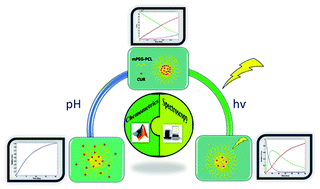Crucial successes in drug delivery systems using multivariate chemometric approaches: challenges and opportunities†
Abstract
The scope of the present work is to apply multivariate chemometric methods to the explorative and quantitative analysis of loading and release processes in drug delivery systems (DDSs). The monitoring of processes is conducted using the spectrophotometric method as a simple, cost-effective and available technique. Then the chemical information is recovered from spectrophotometric data using sophisticated chemometric methods such as the multivariate hard modelling approach and the rank annihilation factor analysis method. Attention is drawn to a curcumin delivery system for addressing some challenges in DDSs, and then presenting the opportunities based on a multivariate analysis. The two main challenges are: how to decrease the possibility of drug adsorption in the loading step, which could prevent the initial burst release of the drug, and how to achieve an accurate kinetic rate constant of drug release in the presence of side reactions such as drug self-degradation. Furthermore, this research paves the way towards the use of a multivariate analysis method to investigate and compare three photo-degradation processes: that of the drug, drug-to-carrier complex and physical mixture of the drug and carrier.



 Please wait while we load your content...
Please wait while we load your content...